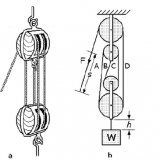Artificial Intelligence of Robots – 21009
The definition of what constitutes artificial intelligence (AI) varies among engineers. There is no universally accepted agreement on its exact meaning. The programming of robots can be divided into levels, starting with the least sophisticated and progressing to the theoretical, rather nebulous level of AI.
Artificial intelligence, at the top level, encompasses properties, behaviors, and tasks and involves robots with features such as the ability to:
• Sense physical variables such as light and sound
• Generate high-resolution images (vision system)
• Develop a concept of reality (world model)
• Determine the optimum or most efficient course of action
• Learn from past mistakes
• Create a plan in a given situation, and then follow it through
• Modify a plan as changes occur in the environment
• Carry on two-way conversations with humans or other machines
• Infer solutions based on limited or incomplete information
• Develop new ways to solve old problems
• Search the knowledge base for specific facts or solutions
• Program themselves
• Improve their own designs
Artificial intelligence is difficult to quantify; the most tempting standard is to compare “machine intelligence”with human intelligence. For example, a smart machine can be given an intelligence quotient (IQ) test similar to the tests designed to measure human intelligence. In this interpretation, the level of AI increases as a robot or computer becomes more “human-like” in its reactions to the world around it. Another scheme involves the use of games requiring look-ahead strategy, such as checkers or chess.



